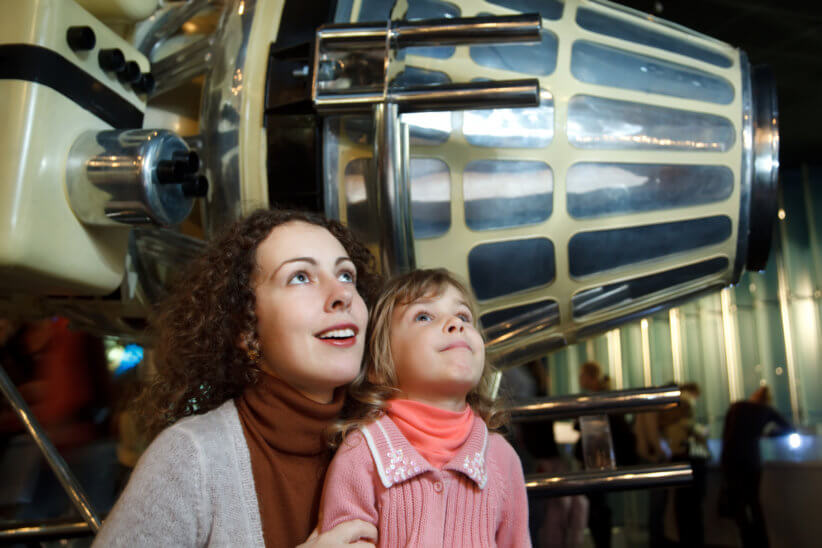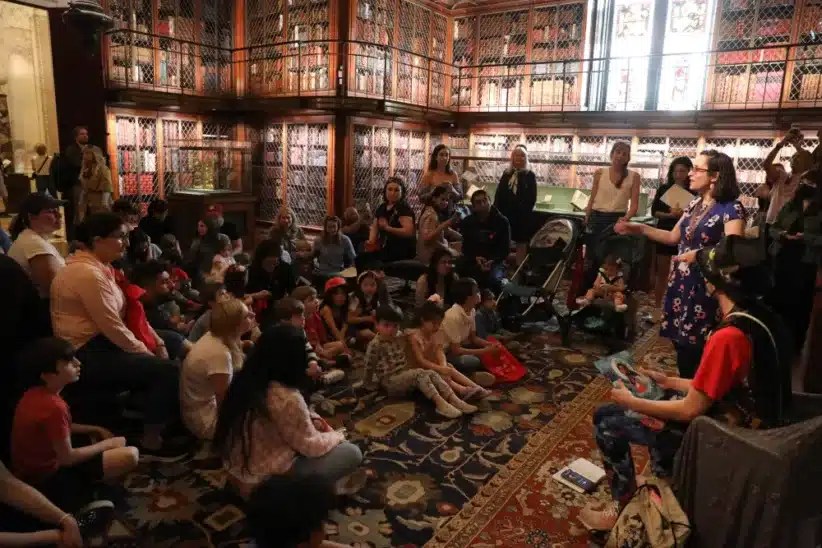The Bronx is celebrating a renaissance as an exciting urban gallery thanks in part to an innovative group that lavishes art on abandoned buildings.
No Longer Empty, comprised of artists and curators, reinvents vacant venues as modern-day museums by filling them with temporary exhibitions that take art to the public arena and address the economic slump that contributed to their demise. It transformed an old bait and tackle store on the ground floor of the Chelsea Hotel for its inaugural exhibition in 2009, and last month it launched “This Side of Paradise” on the Grand Concourse at the landmarked Andrew Freedman Home — a relic from the Roaring ’20s. The Italian Renaissance-style palazzo, an ex-retirement home for formerly wealthy seniors, has fallen on hard times due to diminishing funds, and operates these days as an events space and day care center — but that’s all about to change, thanks to smart art.
“Paradise” features dozens of installations by more than 30 local and international artists — among them, Bronx veteran John Ahearn, Sofia Maldonado, and Daze — under whose mastery the dilapidated ballrooms, bedrooms, bathrooms, kitchens, and libraries become vibrant windows into the demographics, history, culture, and even transportation of a borough not typically associated with Shangri-la (although previous generations of immigrants fled Eastern Europe and the Lower East Side’s tenements for its comparative clean air).
The results are thought-provoking, heart-warming — even eye-popping! There’s a Persian rug made from everyday objects, a room recreated with music, furniture and artifacts, and a collaborative game whose story always has a different ending.
Ahearn’s piece is a sweet partnership with children from the Headstart program on the ground floor. Plaster casts of their hands form a garland to represent the home’s present community. Maldonado stirs new life in the decommissioned kitchen with her candy-colored pop-art, showing a gussied-up cook observing from high above, while offering a new perspective of the cookhouse whose white-gloved butlers and maids once tended meticulously to the penniless boarders who dressed in tuxedos and gowns for dinner. The attention to decorum was among the requirements mandated by the eponymous benefactor, a former owner of the New York Giants baseball team and a financier of New York’s first subway lines, who left an endowment in his will for the home’s creation.
“They were expected to have attained a state of reasonable culture, and not to eat peas with their knives,” commented an article at the time in the New Yorker.
Bolts of color and animated characters inspired by the cartoon flicks, “The Yellow Submarine” and “Alice in Wonderland” — the handiwork of Daze — jazz up a space that until recently resembled a room in a Vanderbilt mansion that hadn’t been occupied in decades.
“Peeling paint, leaking ceilings, old carpeting, and rusted pipes added to an ambience that could best be described as eerie,” says the artist.
Expect to be awed and exhilarated, too, by the magnificence and the scale of the exhibition.
“We hope that these artworks, and the mere fact of transforming a space into an artistic expression, inspires people to seek more art or even to do it themselves!” says Naomi Hersson-Ringskog, No Longer Empty’s executive director.
“Paradise” also features interactive workshops, school tours, and family events as it ushers in a new era of glory days at the Freedman manor, jump-starts an art revolution in the Bronx, and nudges the viewer to rethink, “Where is paradise?”
“This Side of Paradise” through June 5 at the Andrew Freedman Home [1125 Grand Concourse bet. McClellan and 165th streets in the Bronx], Thursday-Sunday, 1–7 pm, free; www.nolongerempty.org.
Reach reporter Shavana Abruzzo at [email protected] or by calling (718) 260-2529.




















